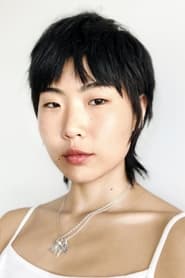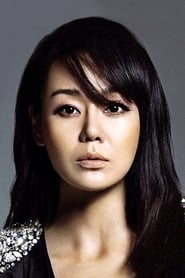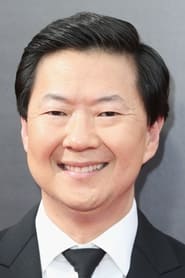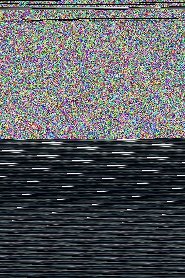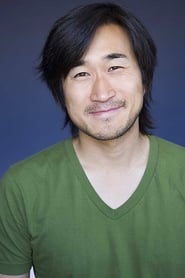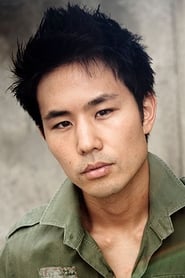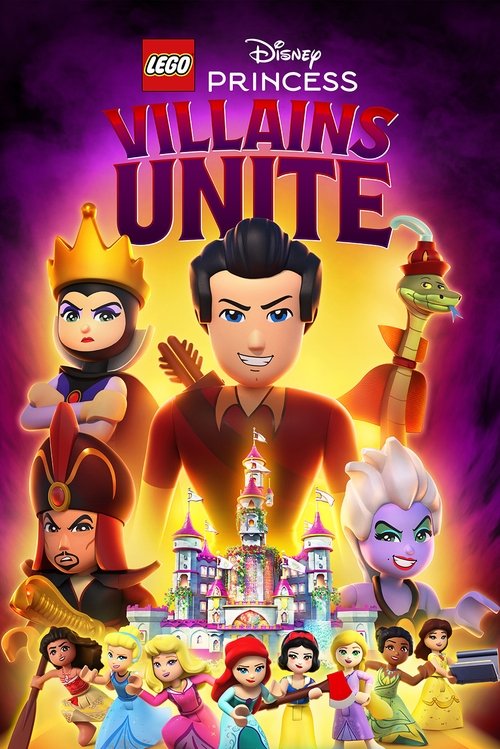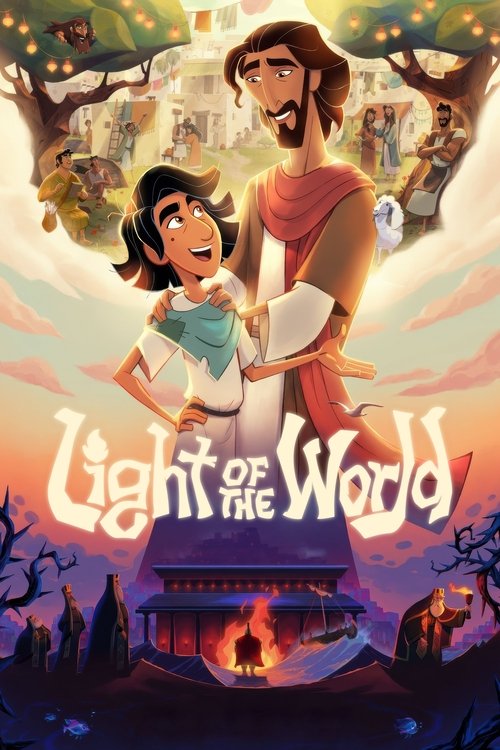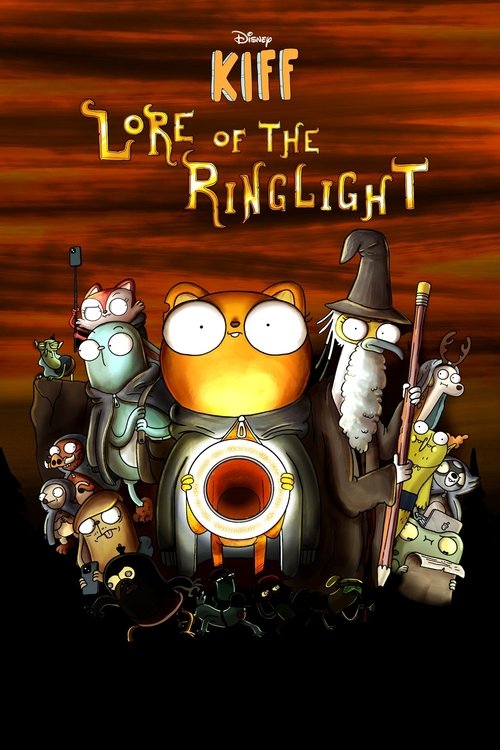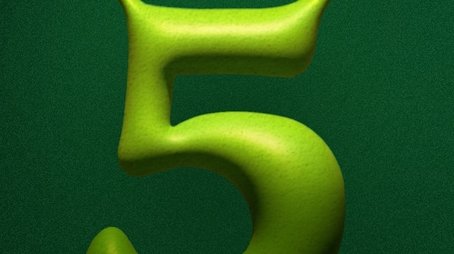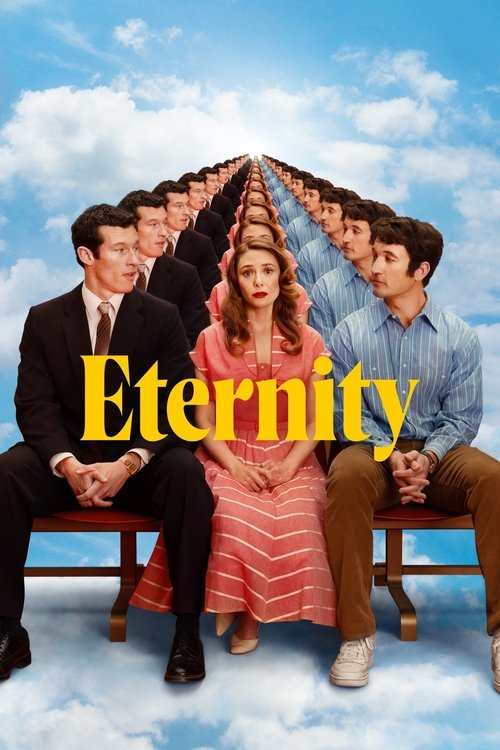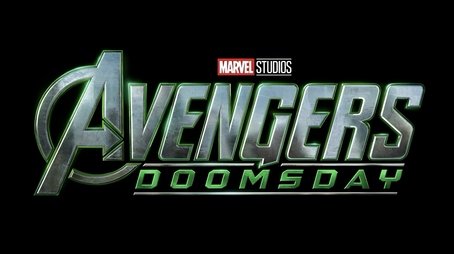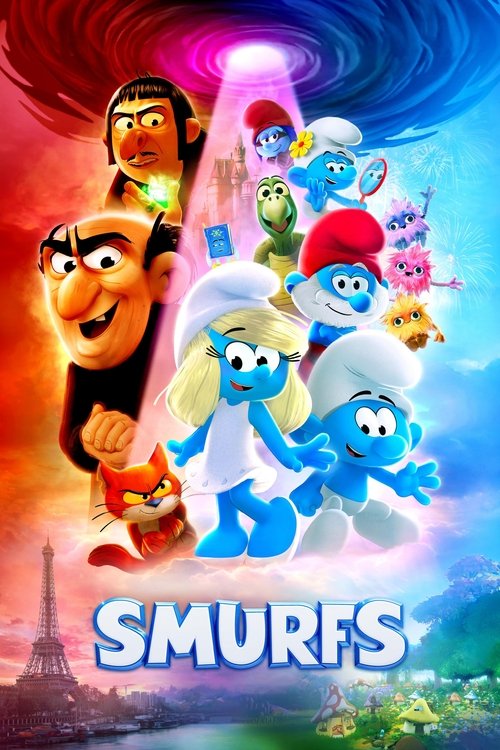
Ask Your Own Question
What is the plot?
KPop Demon Hunters opens with a legend from centuries past: demons have long preyed on humans, feeding their souls to the demon king Gwi-Ma. To protect humanity, a trio of women known as the Hunters emerge in each generation, using the power of their singing voices to create the Honmoon, a magical shield that prevents demons from crossing into the human world. Their ultimate goal is to perfect the Golden Honmoon, a permanent barrier that would banish demons forever.
In the present day, the latest incarnation of the Hunters is a K-pop girl group called Huntr/x, consisting of three talented young women: Rumi, the lead vocalist with a mysterious heritage; Mira, the rebellious "black sheep" of the group; and Zoey, the sweet yet fierce rapper. Their mentor and former Hunter, Celine, raised Rumi after her mother's death and has kept a crucial secret from the others--Rumi is actually half-demon on her father's side, a fact that causes her to struggle with her singing voice and identity. Celine hopes that by creating the Golden Honmoon, Rumi's demonic marks will be erased.
As Huntr/x prepares for their next big live performance of their new single "Golden," they face an unexpected threat. On their private jet en route to the concert, they discover that the flight attendants are demons. The trio fights them off midair while performing their hit song "How It's Done," landing spectacularly on stage to the cheers of thousands of fans, dispatching the last demon in a dazzling display of music and combat.
Meanwhile, in the demon realm, Gwi-Ma grows furious at his minions' repeated failures to capture human souls. Jinu, one of Gwi-Ma's oldest demons and a former human himself, proposes a new strategy: instead of direct attacks, they will form a demon boy band called the Saja Boys to rival Huntr/x's popularity. By enchanting human fans and turning their spiritual energy against the Honmoon, the Saja Boys aim to weaken the protective barrier and open the way for Gwi-Ma's return. In exchange, Jinu demands that Gwi-Ma erase the painful memories of his human past that have haunted him for centuries.
Jinu and his comrades--Romance, Mystery, Abs, and Baby--assume human forms and debut as the Saja Boys, quickly climbing the music charts with their catchy songs and supernatural allure. Their rise threatens Huntr/x's influence and causes the Honmoon to weaken, allowing demons to begin spilling into the human world.
As Huntr/x enters a hiatus after their world tour, Rumi's voice begins to falter, revealing her half-demon nature through strange markings on her arms. She confides in Celine, who has long known Rumi's secret and has kept it hidden from Mira and Zoey to protect her. Seeking a cure, the trio visits Healer Han, who examines their spirits and prescribes remedies to restore Rumi's voice.
Tensions rise when Huntr/x encounters the Saja Boys during a variety show. The two groups clash musically and physically, with Jinu discovering Rumi's demonic marks during a fight but choosing to keep her secret from the others. Jinu later meets Rumi privately on a rooftop, revealing his tragic past: 400 years ago, he was a poor human who sold his soul to Gwi-Ma for wealth and a beautiful voice, only to be condemned to the demon realm, leaving his family to suffer and die. He explains that demons are tormented by shame and regret, symbolized by their markings, and encourages Rumi to accept her nature rather than hide it.
As the Idol Awards approach, Huntr/x prepares a powerful diss track called "Takedown" to expose the Saja Boys and strengthen the Honmoon. However, Rumi struggles with the song's hateful lyrics, reflecting her internal conflict. Meanwhile, rumors swirl about romantic pairings between members of the two groups, with Rumi and Jinu secretly growing closer.
During a dramatic confrontation atop a speeding train, Huntr/x performs "Takedown" while battling demons, but the Honmoon continues to weaken, and many passengers are abducted by demons. Rumi and Jinu agree to work together: if Jinu helps Huntr/x win the Idol Awards, he can remain free of Gwi-Ma's control. Jinu promises to sabotage the Saja Boys' efforts, and Rumi finds her voice restored through their connection.
However, Gwi-Ma summons Jinu back to the underworld, reminding him of their pact and revealing that Jinu's past is darker than he admitted--he abandoned his family for selfish gain. Under threat, Jinu must obey Gwi-Ma's commands.
At the Idol Awards, the Saja Boys mysteriously fail to appear, and Huntr/x performs "Golden." But the demons trick Mira and Zoey into leaving Rumi alone on stage, where impostor demons disguised as Mira and Zoey join her for "Takedown," exposing Rumi's demonic marks to the world. Feeling betrayed, Mira and Zoey reject Rumi, and the band fractures. Jinu admits to Rumi that he lied about his past and his betrayal.
Gwi-Ma uses his power to hypnotize Mira, Zoey, their manager Bobby, and the public, drawing them to the Saja Boys' final concert at Namsan Tower, where they plan to harvest thousands of souls and shatter the Honmoon completely.
Rumi confronts Celine, begging her to end her life to prevent further pain, but Celine refuses and offers to conceal Rumi's secret once more. Feeling abandoned, Rumi embraces her demon side fully and resolves to stop Gwi-Ma herself.
At the climactic concert, Rumi arrives and sings a new song, "What It Sounds Like," which breaks the hypnosis over Mira, Zoey, and the crowd. The reunited Huntr/x fight the Saja Boys and their demon minions with powerful choreography and heartfelt music. Gwi-Ma attacks with a massive fire blast, but Jinu sacrifices himself by shielding Rumi, transferring his restored soul to her and empowering her.
With the spiritual energy of the freed humans lending strength, Huntr/x defeats the remaining Saja Boys and banishes Gwi-Ma back to the underworld, restoring the Honmoon--though not yet the Golden Honmoon.
In the aftermath, Rumi, Mira, and Zoey reconcile, tearfully expressing their love and renewed sisterhood. They take a brief respite but soon return to their fans, ready to continue their dual lives as K-pop idols and demon hunters. Watching over them from the shadows, Jinu's loyal companions--a mystical bird and tiger--remain vigilant, hinting at future challenges.
Thus, the film closes on a note of hope and unity, with the trio stronger and more united than ever, prepared to face whatever darkness may come next.
What is the ending?
KPop Demon Hunters ends with the trio--Rumi, Mira, and Zoey--defeating the demon king Gwi-Ma and his demon horde, restoring the protective barrier called the Honmoon, though it remains imperfect. Jinu sacrifices himself to save Rumi, empowering her to deliver the final blow. The Saja Boys are mostly defeated, but two members survive, leaving room for future conflict. Rumi accepts her part-demon identity and continues her work as an idol.
The ending unfolds scene by scene as follows:
-
Idol Awards Ceremony Setup: The Saja Boys, demon antagonists sent by Gwi-Ma, are expected to perform but do not show up. Instead, the trio HUNTR/X--Rumi, Mira, and Zoey--take the stage to perform. This event is critical as it represents a battle for the hearts and souls of the fans, who are vulnerable to Gwi-Ma's soul-consuming influence.
-
Rumi's Demon Marks Revealed: During the performance of the song "Takedown," Rumi is tricked into revealing her demon marks. This shocks Mira and Zoey, who had been replaced by demons on stage earlier and were unaware of Rumi's part-demon nature and her connection to Jinu, a former ally turned antagonist. This revelation strains their partnership.
-
Gwi-Ma's Hypnosis and Control: Gwi-Ma hypnotizes the audience, as well as Mira and Zoey, forcing them to attend the Saja Boys' performance under his control. This moment heightens the stakes, as the heroes are momentarily incapacitated and the demon influence spreads among the people.
-
Rumi's Plea and Resolve: Rumi, overwhelmed by her identity and the situation, goes to her foster mother and begs for death to escape her fate, but her foster mother refuses. This scene shows Rumi's internal struggle and her eventual decision to fight on.
-
Rumi's New Song and Breaking the Spell: Rumi debuts a new song that breaks Gwi-Ma's hypnotic control over the audience, Mira, and Zoey, enabling them to fight back. This act restores their agency and turns the tide of the battle.
-
Jinu's Sacrifice: In the climactic battle, Jinu, who had been coerced by Gwi-Ma and conflicted over his past choices, sacrifices himself by taking a fatal blow meant for Rumi. With his dying strength, he transfers his soul to Rumi, granting her an enhanced sword capable of wounding Gwi-Ma.
-
Final Battle and Victory: Empowered by Jinu's sacrifice, the trio HUNTR/X fights Gwi-Ma, the Saja Boys, and the remaining demons. They succeed in banishing them back to the underworld permanently and forge a new Honmoon barrier to protect the mortal realm.
-
Aftermath and Open Threads: The movie closes with Rumi accepting her part-demon identity and making amends with her friends. Mira and Zoey survive and continue their work as demon hunters. Two members of the Saja Boys, Romance and Baby, are not killed on screen and presumably escape, leaving open the possibility of their return in future stories.
Fates of Main Characters at the End:
- Rumi: Accepts her part-demon nature, empowered by Jinu's soul transfer, and continues as an idol and demon hunter.
- Mira and Zoey: Survive the final battle, regain their freedom from hypnosis, and remain part of HUNTR/X.
- Jinu: Dies heroically, sacrificing himself to save Rumi and empower her to defeat Gwi-Ma.
- Gwi-Ma: Banished back to the underworld, defeated but with the new Honmoon only partially perfected.
- Saja Boys: Mystery and Abs are killed; Romance and Baby escape, their fates unresolved.
This detailed sequence highlights the climax's emotional and action beats, focusing on the characters' struggles, sacrifices, and ultimate triumph over demonic forces.
Who dies?
Yes, several characters die in the 2025 movie KPop Demon Hunters. Key deaths include:
-
Jinu: He sacrifices himself via a soul transfer near the end of the film. Jinu, a former human who sold his soul to the demon ruler Gwi-Ma, dies to help the protagonists in their fight against the demons.
-
Mystery Saja: This member of the demon boy band Saja Boys is killed by having his throat slit.
-
Romance Saja: Another Saja Boy who is stabbed in the chest and dies.
-
Abby Saja: Also a member of the Saja Boys, she is killed by having her chest cut open.
-
Gwi-Ma: The demon ruler and antagonist is blown up in the climax, effectively killed.
-
Baby Saja: Presumed killed offscreen, though details are not shown explicitly.
Additionally, many faceless demons and minor characters die throughout the film, mostly killed by the demon-hunting girl group Huntr/x. The kill count reaches 347, including numerous demons sliced, stabbed, incinerated, or having their souls taken.
The deaths mostly occur during the escalating conflict between the demon-hunting girl group Huntr/x and the demon boy band Saja Boys, culminating in a final battle to protect the magical seal called the Honmoon that keeps demons at bay. Jinu's sacrifice is a pivotal moment that helps turn the tide against Gwi-Ma and his minions.
In summary, the main named characters who die are Jinu, three Saja Boys (Mystery, Romance, Abby), and the demon lord Gwi-Ma, all dying in violent confrontations tied to the struggle between humans and demons in the K-pop idol setting.
Is there a post-credit scene?
Yes, KPop Demon Hunters (2025) has a post-credit scene. In this scene, after the main story concludes with the defeat of the demons and the sealing away of Gwi-Ma, there is a hint that the threat is not entirely over. The post-credit scene suggests lingering supernatural elements or unresolved issues, leaving the door open for future developments or a sequel.
The main film ends with the K-pop girl group Huntr/x defeating the demon boy band and Gwi-Ma through a powerful musical performance, with Jinu sacrificing himself to help seal the demons away. However, the post-credit scene implies that the battle between music and monsters may continue beyond the film's conclusion.
What is the significance of Rumi's demon markings and how do they affect her character?
Rumi's demon markings reveal that she is part-demon, which causes her to lose her voice and struggle with shame. These markings are the same as those full demons have and symbolize misery and regret. Rumi initially hides them from her bandmates, but eventually learns that the marks do not define her identity, helping her grow and accept herself. This internal conflict is central to her character development throughout the story.
How does the demon boy band, the Saja Boys, threaten the K-pop girl group Huntr/x?
The Saja Boys, led by the demon Jinu, form a rival K-pop boy band to steal Huntr/x's fans and weaken the magical barrier called the Honmoon that the girls maintain through their singing. By diverting the fans' attention, the Saja Boys aim to break the barrier and allow more demons to enter the human world. This strategy is a key plot element driving the conflict between the two groups.
What is the role of the demon king Gwi-Ma in the story?
Gwi-Ma is the demon king who feeds on human souls and is angered by his minions' failures to capture more souls. He authorizes Jinu's plan to form the Saja Boys to weaken the Honmoon barrier. Gwi-Ma's desire for more humans to feast on motivates much of the antagonistic action in the film.
Who is Celine and what is her relationship to the main characters?
Celine is a former demon hunter who raised Rumi and guides the current trio, Huntr/x. She is aware of Rumi's demon heritage and the significance of the Honmoon barrier. Celine's mentorship and knowledge provide crucial support to the girls as they balance their idol careers with their demon-hunting duties.
What is the nature of the relationship between Rumi and Jinu?
Rumi and Jinu share a complex relationship; although Jinu is the leader of the demon boy band and an antagonist, he discovers Rumi's demon marks and helps her hide them from her bandmates. Their interactions reveal deeper layers to Jinu's character beyond being a villain, and their dynamic adds emotional depth to the story.
Is this family friendly?
The movie KPop Demon Hunters (2025) is rated PG for action/violence and scary images, indicating it is generally suitable for a family audience but may contain some elements that could be unsettling for very young children or sensitive viewers.
Potentially objectionable or upsetting aspects include:
- Action and violence: The film features fight scenes involving demon hunting, which are animated with fluid, dynamic movements but include combat and supernatural battles.
- Scary images: There are depictions of demons and otherworldly creatures that might be frightening to younger or sensitive children.
- Emotional themes: The story explores identity, shame, self-acceptance, and vulnerability, which may involve moments of emotional intensity or struggle but are handled in an empowering and heartfelt way without being preachy.
No explicit content, strong language, or mature themes beyond the above are noted in reviews. The film balances its darker elements with humor, vibrant visuals, catchy music, and positive messages, making it broadly accessible but best suited for older children and up.
Does the dog die?
In the 2025 movie KPop Demon Hunters, there is no mention or indication that a dog dies. The plot and summaries focus entirely on the demon-hunting K-pop girl group Huntr/x, their battle against a demon boy band, and the supernatural conflict involving the Honmoon barrier and demon king Gwi-Ma. None of the available detailed plot descriptions or reviews reference a dog character or any event involving a dog's death.
The search results include a general site about whether dogs die in movies, but this is unrelated to KPop Demon Hunters specifically. Also, news and reviews about KPop Demon Hunters do not mention any dog or pet-related subplot.
Therefore, based on all available information, no dog dies in the movie KPop Demon Hunters (2025).
whats the theme
The central theme of KPop Demon Hunters (2025) is the fusion of identity, empowerment, and cultural heritage through the lens of a K-pop girl group who lead double lives as demon hunters. The film explores how these young women balance their public personas as celebrated idols with their secret mission to protect humanity from supernatural threats, specifically a rival demon boy band aiming to undermine their power and capture human souls.
This theme is deeply rooted in Korean mythology and demonology, intertwined with the vibrant, high-energy world of K-pop music and performance. The protagonists--Rumi, Mira, and Zoey--use their singing not only as entertainment but as a literal weapon against demons, symbolizing the power of art and culture as a form of resistance and protection. The conflict with the demon boy band, who seek to steal their fans and weaken the barrier between worlds, highlights themes of rivalry, identity struggle, and the fight to preserve one's community and values in the face of dark forces.
Overall, the film blends fantasy, music, and cultural storytelling to emphasize empowerment, the strength found in unity and heritage, and the duality of public and private selves in a modern, fantastical setting.
whats the theme in a short summary
The central theme of KPop Demon Hunters (2025) is the battle between good and evil expressed through music and identity, focusing on self-acceptance and the power of unity. The story explores how a K-pop girl group, who are also demon hunters, use their singing to maintain a magical barrier protecting humanity from demons. The emergence of a rival demon boy band threatens this balance, symbolizing a clash not only of supernatural forces but also of cultural influence and personal struggles. A key emotional thread is the protagonist Rumi's journey of embracing her hidden demon heritage and shameful markings, learning that confronting and revealing one's flaws is essential for true strength and growth. This theme intertwines spiritual elements with the modern globalized K-pop culture, highlighting healing through exposure of inner sins and flaws rather than concealment.
make me a plot diagram of the movie
The plot of KPop Demon Hunters (2025) can be diagrammed as follows:
Exposition:
In a historical Korea where demons prey on human souls to sustain their demon king, Gwi-Ma, three legendary women demon hunters use their singing to maintain a magical barrier called the Honmoon that seals demons away. This legacy continues into the present with Rumi, Mira, and Zoey, members of the popular K-pop girl group Huntr/x, who balance their idol careers with demon hunting duties.
Inciting Incident:
After completing a world tour, Huntr/x prepares to debut a new single called "Golden," which is meant to strengthen the Honmoon into the Golden Honmoon, a permanent seal against demons. Meanwhile, Gwi-Ma, frustrated by his minions' failures, agrees to a plan by the demon Jinu to form a demon K-pop boy band, the Saja Boys, to steal Huntr/x's fans and weaken the Honmoon barrier.
Rising Action:
The Saja Boys debut and begin to captivate the public, drawing fans away from Huntr/x and causing the Honmoon to weaken. Rumi struggles with a secret: she is part-demon and bears demon markings on her arm, which she hides from her bandmates. Jinu discovers Rumi's secret during their confrontations but chooses to protect her. The tension escalates as Huntr/x must fight to protect their fans and the barrier while dealing with internal struggles and the threat of the Saja Boys.
Climax:
Huntr/x confronts the Saja Boys in a high-stakes battle that combines their singing and combat skills. Rumi embraces her demon heritage and reveals her markings, symbolizing acceptance and strength rather than shame. This emotional breakthrough empowers the group to perform "Golden" with full force, aiming to complete the Golden Honmoon and banish the demons permanently.
Falling Action:
The power of Huntr/x's music and unity begins to restore the Honmoon barrier. Jinu, influenced by Rumi's acceptance and compassion, questions his own identity and the cost of erasing his human memories. The demon boy band's influence wanes as the fans return to Huntr/x, and the balance between the human and demon worlds starts to stabilize.
Resolution:
Huntr/x solidifies their role as both idols and demon hunters, having strengthened the Honmoon and protected humanity. Rumi's acceptance of her dual nature symbolizes healing and self-empowerment. The film closes on a hopeful note, celebrating Korean culture, mythology, and the power of music to unite and heal.
This plot diagram captures the key narrative beats and character arcs of KPop Demon Hunters (2025), highlighting its blend of supernatural action, music, and cultural themes.
would jinu be consiterd a dymanic character
Jinu in KPop Demon Hunters (2025) is considered a dynamic character because he undergoes significant internal change throughout the film. Initially, Jinu is a former human turned demon who leads the rival boy band Saja Boys under the control of the demon ruler Gwi-Ma, believing his demonic nature and servitude to be his fate. However, his encounters with Rumi, who despite her half-demon heritage chooses good daily, challenge his beliefs about destiny and choice. This leads to Jinu's redemption arc, culminating in a self-sacrificial act where he gives his soul to help Rumi defeat Gwi-Ma, transforming from villain to tragic hero and embodying themes of shame, self-acceptance, and the power of choice.
This profound transformation--from a resigned antagonist to a selfless redeemer--marks Jinu as a dynamic character, as he evolves emotionally and morally in response to the story's events.
Plot of kpop demon huntres
KPop Demon Hunters (2025) follows a K-pop girl group called Huntr/x--composed of Rumi, Mira, and Zoey--who lead double lives as demon hunters. Historically, demons have preyed on humans, feeding their souls to the demon king Gwi-Ma. Three women demon hunters sealed the demons away with a magical barrier called the Honmoon, maintained and strengthened across generations through their singing. The current trio, Huntr/x, uses their music to keep this barrier intact and protect humanity.
After completing a world tour, Huntr/x prepares to debut a new single called "Golden," which is meant to help turn the Honmoon into the Golden Honmoon, a final seal to banish demons permanently. However, Rumi begins losing her voice due to her secret demon heritage, known only to their mentor Celine. Meanwhile, in the demon world, Gwi-Ma is frustrated by his minions' failures and agrees to a plan by Jinu, a former human turned demon, to form a demon K-pop boy band called the Saja Boys. Their goal is to steal Huntr/x's fans, weaken the Honmoon barrier, and allow more demons to enter the human world. Jinu even agrees to have his human memories erased if successful.
The story intensifies as Huntr/x encounters the Saja Boys during their debut, discovering their demonic nature. Jinu recognizes Rumi's demon marks during their confrontations but helps conceal this from her bandmates. The film blends vibrant K-pop performances with supernatural battles, exploring themes of identity, acceptance, and self-worth as the girls fight to protect their fans and the world from the growing demon threat.
Summary plot of kpop demon huntres
KPop Demon Hunters (2025) follows a K-pop girl group named Huntr/x--Rumi, Mira, and Zoey--who lead double lives as demon hunters in a version of Korea where demons prey on human souls to sustain their demon king, Gwi-Ma. Historically, three women have always emerged as demon hunters, using their singing voices to maintain a magical barrier called the Honmoon that keeps demons sealed away. The current trio, Huntr/x, balances their global idol careers with fighting demons to protect humanity.
The story intensifies when Gwi-Ma, frustrated by his minions' repeated failures, agrees to a plan by a demon named Jinu. Jinu forms a rival demon K-pop boy band called the Saja Boys, aiming to steal Huntr/x's fans and weaken the Honmoon barrier. If the Saja Boys win the International Idol Competition, it would mean the end of Huntr/x's power and allow demons to invade the human world.
Rumi, the lead singer of Huntr/x, harbors a secret: she is part demon, marked by symbolic patterns on her arms. Her mentor, Celine, has told her that turning the Honmoon golden will banish her demon side and make her fully human. However, Rumi struggles with her voice faltering and the shame of her hidden demon heritage. As the competition with the Saja Boys heats up, Rumi and her bandmates must confront their fears and unite their powers to protect the Honmoon and humanity.
The film blends high-energy K-pop performances with supernatural battles, exploring themes of identity, acceptance, and empowerment. It culminates in a showdown where Huntr/x must use their voices and strength to turn the Honmoon golden, sealing away the demons forever and allowing Rumi to embrace her true self without shame.
background of kpop demon hunter
The background of KPop Demon Hunters (2025) centers on a unique blend of Korean mythology, demonology, and K-pop culture. The story is set in a historical version of Korea where demons actively capture human souls to sustain their demon king, Gwi-Ma. Throughout history, three women have emerged as demon hunters who use their singing as a powerful weapon to prevent demons from fully entering the human world. The current incarnations of these women are Rumi, Mira, and Zoey, who are also members of a popular K-pop girl group called HUNTR/X. They balance their lives as idols with their secret mission to hunt demons and protect humanity.
The film's concept was inspired by director Maggie Kang's desire to showcase Korean demons and culture, particularly the tradition of female shamans (mudang) and the ancient ritual called gut, which uses music, dance, and incantations to drive away evil spirits. This cultural heritage is reimagined in the film as the K-pop performances of HUNTR/X, blending traditional spiritual practices with modern pop music.
The main conflict arises when Gwi-Ma, frustrated by the hunters' success, empowers a demon named Jinu to form a rival demon K-pop boy band called the Saja Boys. Their goal is to steal HUNTR/X's fans, weaken the spiritual barrier protecting humans, and allow more demons to feast on souls. Jinu even agrees to have his human memories erased if he succeeds. This sets up a battle not only of supernatural forces but also of competing pop groups, intertwining music, fandom, and spiritual warfare.
Additionally, one of the hunters, Rumi, is revealed to be part-demon, marked by strange tattoos that symbolize shame and regret. Her journey involves accepting these marks and growing into her identity, which parallels the film's themes of self-acceptance and overcoming inner demons.
In summary, KPop Demon Hunters combines Korean mythology, shamanistic traditions, and the global phenomenon of K-pop into a story about three idol demon hunters protecting humanity through music and courage, facing off against a demon boy band that threatens to undermine their power and the spiritual balance.
Is there any suicide
There is no indication or mention of any suicide in the movie KPop Demon Hunters (2025). The plot and reviews focus on the story of three K-pop idol girls who are also demon hunters battling a demon boy band to protect humanity, with themes around their secret identities, demon heritage, and the struggle to maintain a magical barrier called the Honmoon. The narrative centers on action, music, and supernatural conflict without any reference to suicide or related themes.




